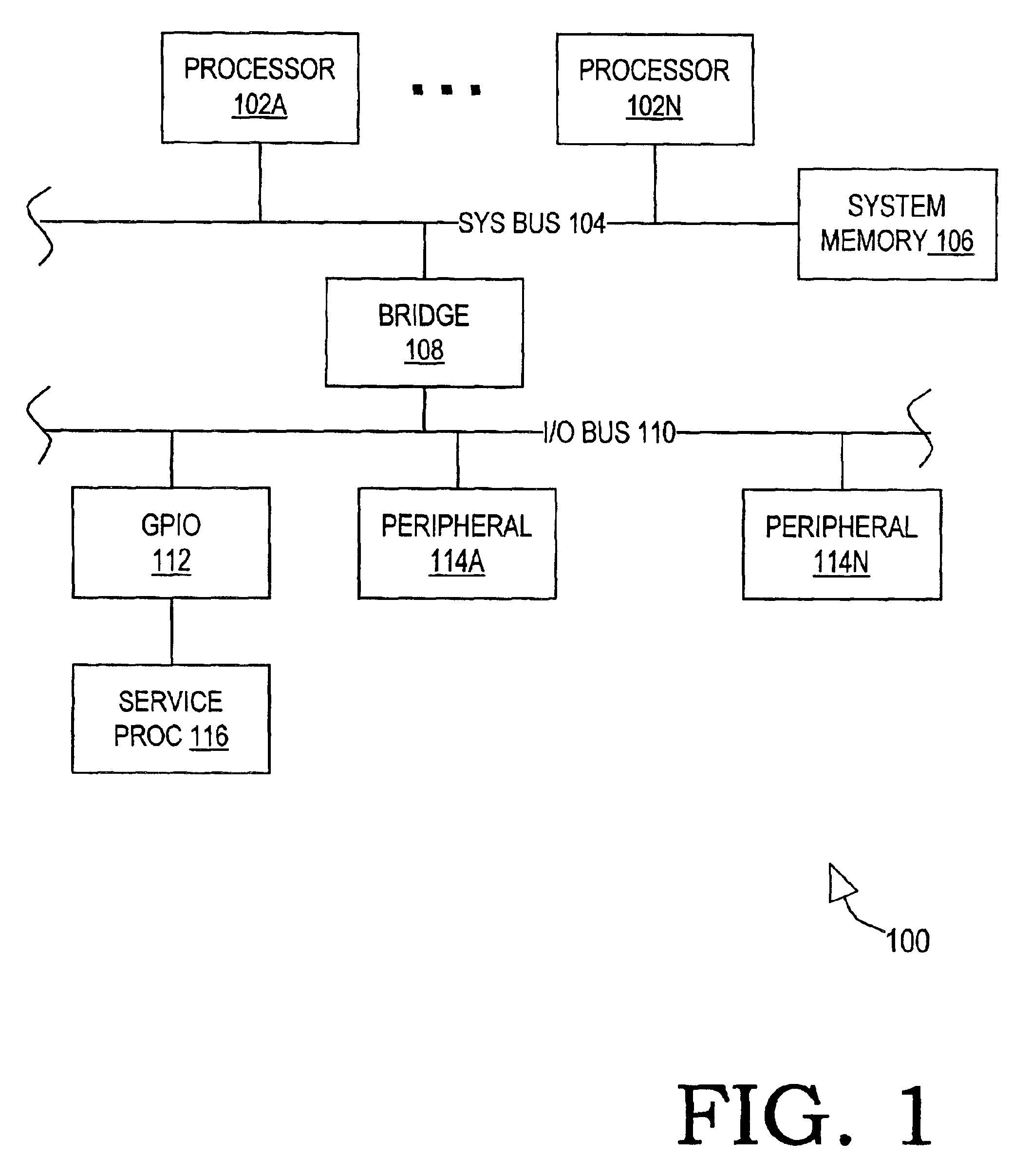Logging insertion/removal of server blades in a data processing system
- Summary
- Abstract
- Description
- Claims
- Application Information
AI Technical Summary
Problems solved by technology
Method used
Image
Examples
Embodiment Construction
[0015]Turning now to the drawings, FIG. 1 is a block diagram of selected features of a data processing system 100 suitable for implementing the present invention. Data processing system 100 may be implemented entirely upon a single printed circuit board. In this embodiment, data processing system 100 may be alternatively referred to herein as server blade 100. In the depicted embodiment, server blade 100 includes a set of main processors 102A through 102N (generically or collectively referred to as processor(s) 102) that are connected to a system bus 104. A common system memory 106 is accessible to each processor 102 via system bus 104. The system memory is typically implemented with a volatile storage medium such as an array of dynamic random access memory (DRAM) devices. The depicted architecture of server blade 100 is frequently referred to as a symmetric multiprocessor (SMP) system because each processor 102 has substantially equal access to system memory 106.
[0016]In server bla...
PUM
 Login to View More
Login to View More Abstract
Description
Claims
Application Information
 Login to View More
Login to View More - R&D
- Intellectual Property
- Life Sciences
- Materials
- Tech Scout
- Unparalleled Data Quality
- Higher Quality Content
- 60% Fewer Hallucinations
Browse by: Latest US Patents, China's latest patents, Technical Efficacy Thesaurus, Application Domain, Technology Topic, Popular Technical Reports.
© 2025 PatSnap. All rights reserved.Legal|Privacy policy|Modern Slavery Act Transparency Statement|Sitemap|About US| Contact US: help@patsnap.com



